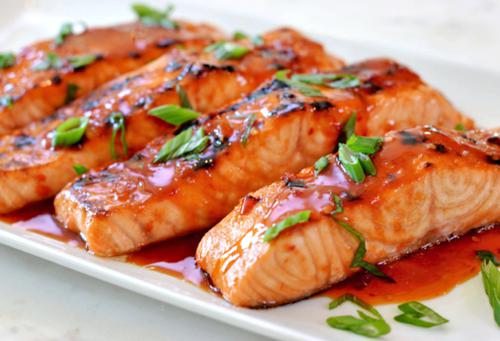Throughout history, fish and shellfish have become not only a great way to spice things up in the kitchen but also a source of economic power. In fact, fish consumption is one of the fastest growing sectors.
When it comes to fish, there's no better and more nutritious one than salmon. As you'll come to know, there are a number of things that can cause salmon to go bad. Learning when salmon has gone bad can save you tons of time and can potentially prevent you from exposing to pathogens and diseases.
Effective Ways to Check Your Salmon
If you are planning to serve salmon for dinner today, the first thing you have to do is to check if it's still edible. Although the shelf life of canned, smoked, or even cooked salmon is longer compared to raw salmon, all types of salmon will eventually expire. That's why it's extremely important to know when salmon has gone bad.
1. Use your nose
Usually, fresh salmon has a mild, sea-like smell. Canned or cooked salmon also has a somewhat neutral aroma. Although you might think it's counter-intuitive because salmon is a fish, by no means should it smell very "fishy". If you feel like it smells like ammonia or just sour, your salmon has gone bad, and you need to throw it away. It doesn't matter if it looks good. If your salmon smells unusual or plain disgusting, it's no longer edible.
2. Inspect it thoroughly
Inspecting your salmon thoroughly is a key part on how to know if salmon is bad. According to the FDA, good salmon should be uniformly pinkish in color and must not be dry or discolored in any way. Although visual signs of raw salmon spoilage can take more time to appear, these are just as vital, including a cloudy appearance on the eyes (in whole salmons) or slimy, moldy, milky-white or sticky residues on the outside (especially around the gills). When dealing with cooked or canned salmon, you can always check the expiration date.
3. Check for firmness
Firmness can also be a great sign to know if your salmon is still edible. Fresh salmon is typically firm and contains a series of white stripes that help maintain its form. If the piece you are going to serve is too old, you'll notice that these white lines have slowly separated. This will affect its firmness and causes it to break while being handled. Another useful tip is to press it with your fingers. Usually, fresh salmons should feel solid and bounce back after you press it with your fingers. If that's not the case, then the salmon is not edible.
For more tips on detecting bad salmon, you can watch professional sushi chef Joe in this video.
What Happens If I Eat Bad Salmon?
High histidine fish like salmon, tuna, mahi-mahi, marlin, and anchovy need to be stored very carefully to prevent bacterial growth. Otherwise, the pathogens will transform histidine to histamine, which can cause illness. Often, mostly due to packaging errors, a visually appealing salmon can go bad way sooner than the expiration date indicates on the package. Spoiled salmon tends to host plenty of pathogens, such as bacteria and mold, which can cause awful health issues.
Scombroid poisoning is a common type of food poisoning that results from high histamine intake. Symptoms of scombroid poisoning include a headache, blurred vision, itchiness, flushed skin, and diarrhea. In severe cases, breathing issues and heartbeat irregularities can also occur. When you are suffering from these symptoms, you are supposed to seek help from the doctor as soon as possible.
How to Properly Store Salmon
To prevent bacterial growth, most experts recommend storing salmon in the fridge for up to two hours after making the purchase. Usually, raw salmon can remain good for two months when stored in the fridge at a temperature below 40°F. You can also expand its lifespan up to nine months by wrapping it in plastic or aluminum foil. For canned, smoked, or cooked salmon, once it's opened, it can last up to six days in the fridge.
The crucial thing to keep in mind is that raw salmon left at room temperature (40-140°F) will develop bacteria in just an hour. Even if you freeze or cook it afterward, it will remain spoiled.
Excellent Ways to Cook Salmon

- Poach it
If you don't need the added calories, poaching is the right way to cook salmon. Basic poaching works by simmering a fish fillet in water usually flavored by salt, bay leaf, and a few whole peppercorns. Make sure you add enough water to entirely cover the fillet. Finally, cook on moderate heat for 25 minutes.
- Grill it
Grilling is a simple way to cook your salmon while adding a delicious, smoky flavor to it. Just start your grill, place your slightly oiled salmon on the grate, and flip it in five-minute intervals until it's done.
- Broil it
Another quick and easy method. Start by turning your oven to broiling mode and place your salmon on a sheet pan soaked in water. Slide the pan on the top rack about three inches from the heat. Leave it for five minutes and check it until you have achieved your preferred doneness.
